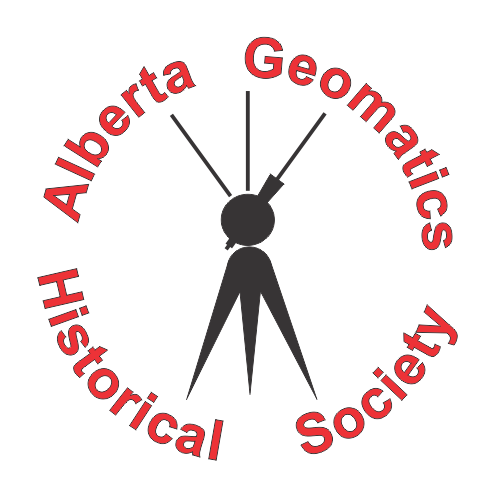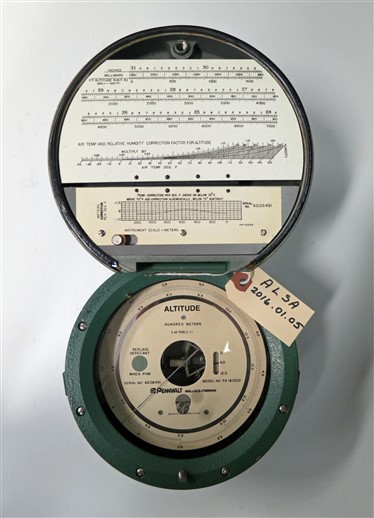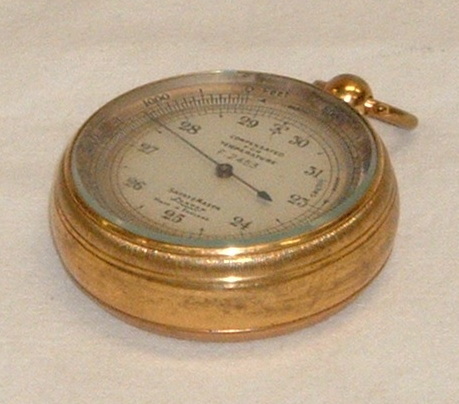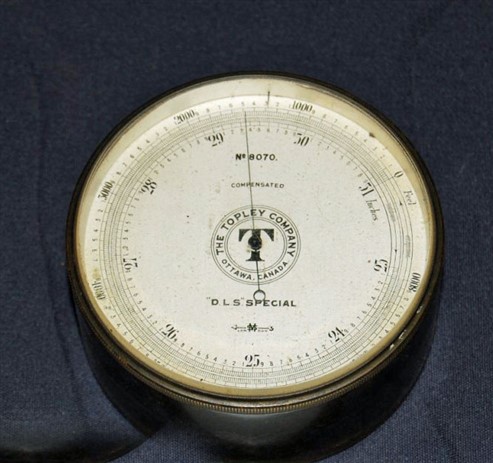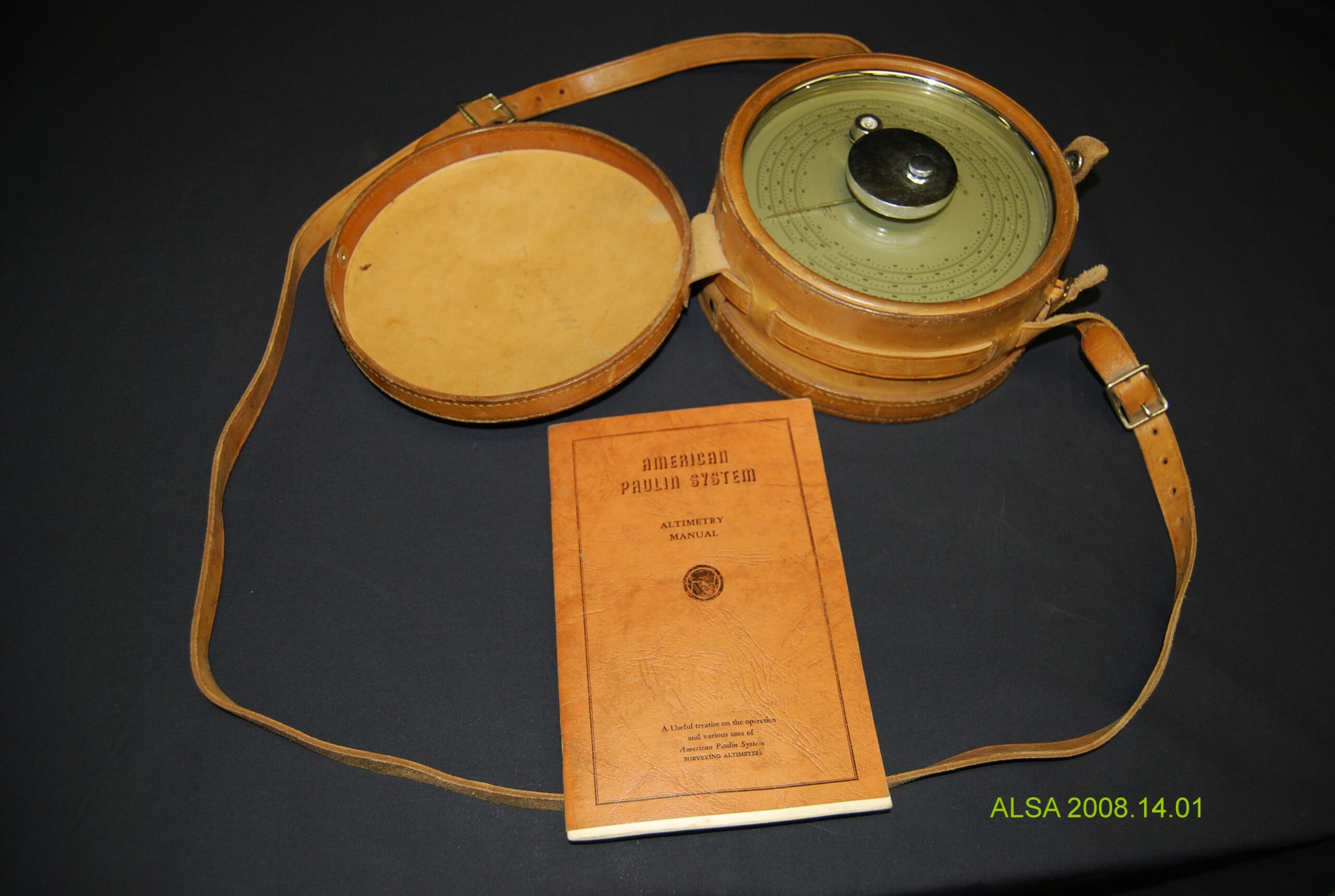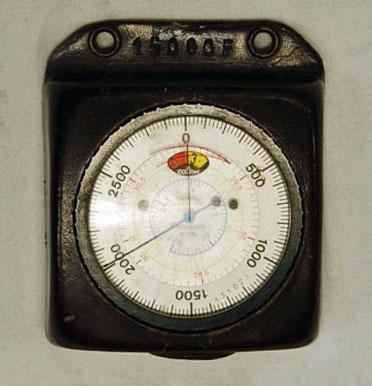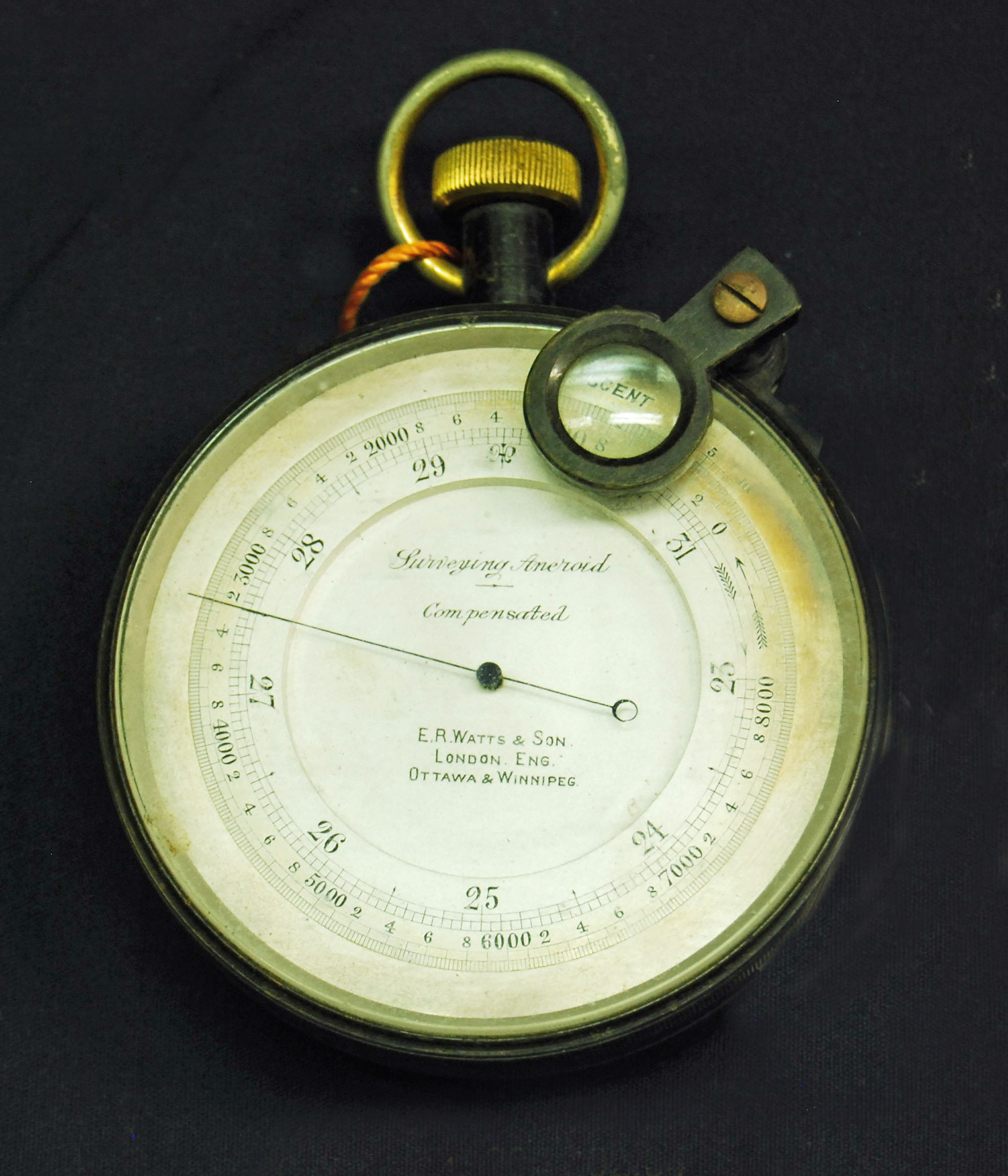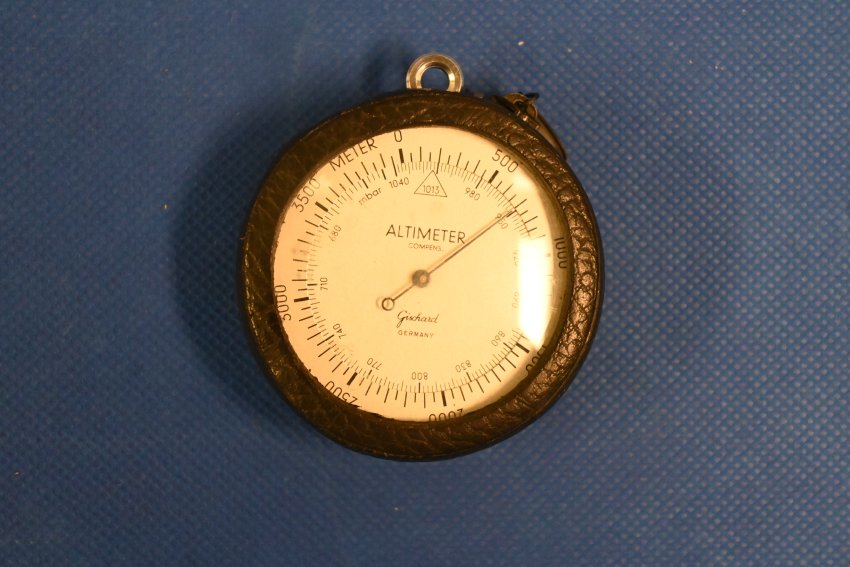Altimeters measure the height above sea level by measuring atmospheric pressure. Altimeters and barometers are similar in that they both measure atmospheric pressure; however, an altimeter has additional functionality which allows pressure readings to be converted to altitude. An aneroid altimeter consists of a box or chamber partially exhausted of air, having an elastic top and a pointer to indicate the degree of compression of the top caused by the external air pressure. Many altimeters are compensated for temperature – If the temperature is colder than the standard air temperature the reading of the altitude is compensated by lowering the reading. If the temperature is warmer the alitude reading is raised.
Altimeters were used by surveyors at the time of the Dominion Land Survey to determine the heights of hills and other topographic features. Later on, they were used to determine atmospheric pressure which was required to make corrections to distances obtained from electronic distance measuring instruments.
The Society has a number of different altimeters in its collection.
